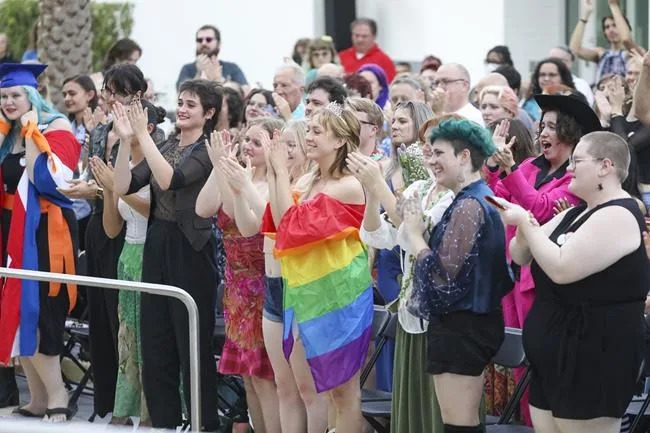Tue, August 15, 2023

College students and professors in Florida are suing education officials over a new law spurred by Republican Gov. Ron DeSantis' war on “woke," saying it violates their constitutional rights by censoring academic freedom.
The lawsuit was filed in federal court Monday by students and professors at New College, a progressive school with a prominent LGBTQ+ community that was taken over earlier this year by DeSantis and his allies, who claimed it was indoctrinating students with leftist ideology.
Florida now leads the United States “in efforts to censor academic freedom and instruction in its college classrooms,” according to the lawsuit, which is seeking a court order to block the law from being enforced.
The measure, passed by the Republican-dominated Legislature this year, outlaws spending on diversity programs, curbs professors’ tenure security and prohibits the teaching of “identity politics” in Florida public schools.
The new law also directs university leaders to monitor against programs that are based on theories “that systemic racism, sexism, oppression, and privilege are inherent in the institutions of the United States and were created to maintain social, political, and economic inequities.”
The suit alleges that the law is unconstitutional because it is overly broad and chills free speech. Specifically, it says the law jeopardizes courses at the honors college on gender studies, queer studies, race, sociology, feminist philosophy and other subjects that affect the school’s curriculum, textbooks, classroom teachings, research and students’ educational experiences.
“In dictating to faculty and students what ideas are true and false, Florida runs headlong into the Bill of Rights,” the complaint states.
The suit names as defendants Florida Education Commissioner Manny Diaz; the Florida Board of Governors, which oversees the state's universities; and the trustees at New College, which is located in Sarasota. The Associated Press sent an email seeking comment to the education commissioner's office and the Board of Governors' office.
When DeSantis, who is running for the Republican presidential nomination, and his allies took over the school earlier this year, they placed conservative trustees on its board and appointed an interim president who was a former Republican speaker of the Florida State House and DeSantis’ first commissioner of education.
Mike Schneider, The Associated Press













